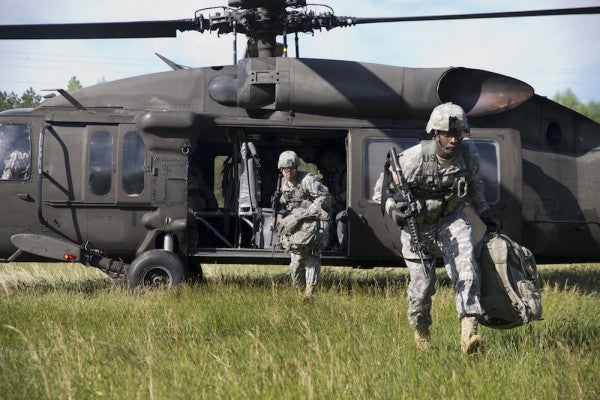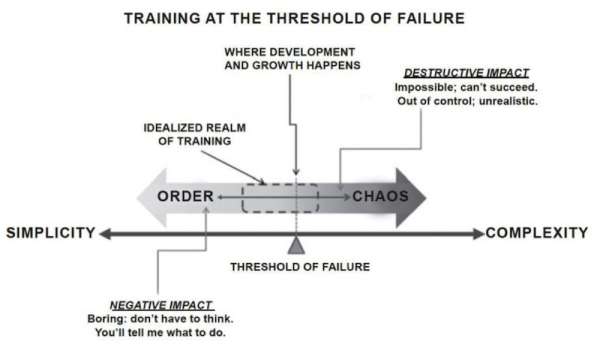Crucible Training Sucks, But There’s A Good Reason For It
Editor’s Note: A version of this article originally appeared on the blog, “The Military Leader.” Are your teams capable of...

Editor’s Note: A version of this article originally appeared on the blog, “The Military Leader.”
Are your teams capable of adapting to a rapidly changing environment? Do you have the best people in positions of leadership to deal with chaos? There are two ways we find out: in combat, or before. To answer these critical questions about our teams and our leaders, the military often uses a historically successful model: the crucible training event.
To do this, at the company, battalion, brigade, or even division level, crucible training must be well defined, include the proper mix of participants, and evaluate the right set of skills in a way that challenges individuals and grows adaptive teams.
I got the dreaded notice in an operations order: All the company commanders, company executive officers, and battalion commanders in my brigade were going to be participating in a “Mungadai” organized by our brigade commander. This was followed by the usual groans about having more important things to do and these silly games interfering with our training schedule. But it’s the Army, so all 50+ of us showed up before dawn with the prescribed packing list, knowing that the “suck fest” would last all day. Eighteen hours later, we were covered in mud and sweat, aching, cut, blistered, and better for it.
Related: This psychedelic 1970s airborne recruitment video is vintage gold »
These sorts of training events have many names in today’s military — Mungadai, Spur Ride, Prop Blast, etc. Throughout warrior cultures, it has been customary for members of a unit to go through some sort of crucible training event to test their mettle, refine their skills, and initiate them into a brotherhood of arms. These sorts of crucible events challenge the participants’ skill, endurance, and cohesion.
However, there is a line between initiation, tradition, and leadership development value when it comes to these events. Crucible training allows leaders to find the right balance between order and chaos to develop junior leaders for any operating environment. They have both a proud legacy and a contemporary training value when executed correctly. As we evaluate these events within current norms and war-fighting requirements, it is important that we consider the purpose and structure events in a manner that is consistent with our values and our mission.
Why are you, as the leader of your unit, organizing this event? Often resource intensive, and always pulling leaders away from their own responsibilities throughout your organization, the purpose for these events should be clear to all. How you think through and define the purpose of this event will send immeasurable signals to your subordinates about you as a leader. Is it merely an entertaining initiation for new members of the unit? In that case, junior leaders may see it as “hazing” and either view this as a double standard, or criticize you for encouraging it to occur.
Have you developed a complex and challenging crucible to test all peer leaders across the organization? A well-considered purpose is what defines the value of the event and its consistency with our values.
A crucible event, by any name, is an opportunity to train and evaluate the leaders within your organization while establishing espirit de corps and a collective understanding of your leadership philosophy across the unit. Leaders who rarely interact in their daily garrison routine are forced to work together and forge relationships that will be essential to the success of future operations.
For that reason, the question of who participates is critical. When the participant list is comprehensive and mandated based on position in the organization, it becomes a leader-development tool. However, when participants see themselves as the “new guy” who need to earn their places within the organization, the nature of the event can change entirely.
Does participating in the event one year preclude you from needing to participate in future events? Why? As a platoon leader, I was required to participate in my battalion’s “Mungadai” event twice, because I was still in that position a year later. The event was designed by the battalion commander to train and evaluate current and future platoon leaders in a week-long course. Yes, the second year was easier for me having experienced it before, but new participants the second year would be my peers during the impending deployment to Afghanistan. Participating with them gave us a shared understanding of our battalion commander’s expectations and of our own capabilities and weaknesses. This familiarity and shared experience paid dividends later. Completing the crucible event once is not an award that limits one’s ability to learn from future events.
Next, are the tasks designed to “smoke” participants, or challenge them physically, mentally, and tactically? These types of events are a unique opportunity for unit leadership to evaluate their junior leaders across the formation. What individual and collective tasks do you value the most? Which types of potential scenarios do you want your leaders to have a collective understanding of your expectations?
For infantry units, I’ve seen the obvious raids, building clearance, air insertion, and squad attacks, but also dealt with interaction with the media or civilians on the battlefield. Other tasks could involve crowd control or securing infrastructure. The list of possibilities is only constrained by resources and your imagination of future conflict.
By combining tests of tactical skill with teamwork, physical exertion in a time-constrained environment, leaders can force the team into the “threshold of failure,” where development occurs. A former brigade commander, Col. Douglas C. Crissman, who looked at crucible event training used by the Asymmetric Warfare Group in the article Improving the Leader Development Experience in Army Units,” points out that “crucibles forge the development of leaders unlike anything they can experience in the classroom or by reading a book.”
Training at the Threshold of Failure Model: Adapted from Asymmetric Warfare Adaptive Leader Program

Different types of units will have varying individual and collective tasks they prioritize to train and evaluate. Advance notice for some of the more perishable individual-level tasks enables leaders to refresh prior to the event and should result in a better outcome. However, in a complex operating environment, it may be best to leave many of the events or conditions unknown, to simulate a changing operating environment.
In addition to these tasks, obstacle courses and team development courses are often included. These team-building exercises supplement the physically challenging nature of the crucible while focusing on the teamwork element separate from standard tasks. Again, the question of which events to include should resort back to your purpose. What do you want to build and evaluate as part of the event?
Is the event a “suck fest” focused on completion, or are there measurable tasks you want to be able to evaluate across your formation? Physical fitness (timed ruck march), marksmanship (stress shoot), and the individual and collective tasks are the obvious choices. Competition between the teams adds an element that contributes to achieving that threshold of failure and improves your leader development outcomes. By deciding how to form teams, you can measure smaller units within your organization. How well do Alpha Company’s platoon leaders work together? How well do 1st Battalion’s company commanders work together as a team?
Conversely, by putting together teams across units and forcing leaders to work with peers from outside their organization, you can increase cohesion across the larger unit and build new relationships. If organized within units, it makes sense to measure the unit’s performance as a whole. If organized to force leaders less familiar with each other to work together, peer evaluations at the end can provide great insight to the individual leadership abilities of every leader within your organization. As before, this goes back to the need for a thoughtful and well-defined purpose.
For unit leaders, how you build these events will tell your subordinates a great deal about your intent, what skills you value, and a shared understanding of your expectations. If designed to be an initiation test and suck fest for new members of the unit, then that perception will permeate other aspects of your organization. If, on the other hand, it is well defined, well resourced, and executed with a clear collective understanding, you will have contributed greatly to building a more cohesive unit. The event, likewise, will challenge your staff to plan and execute a complex operation. They too, will develop that common understanding that is essential to mission command.
On every level, a well-planned crucible event will pay great dividends to your organization going forward.